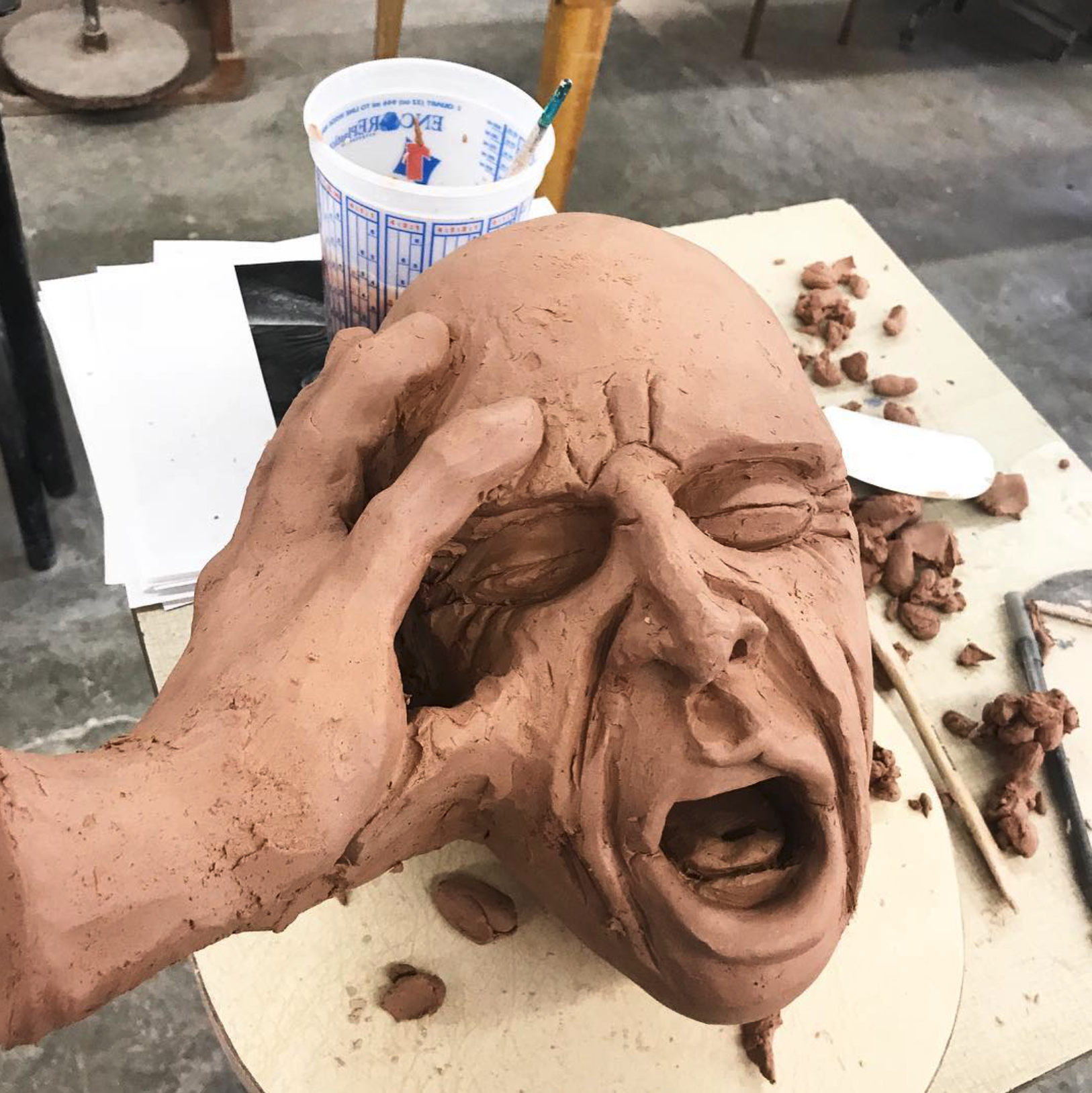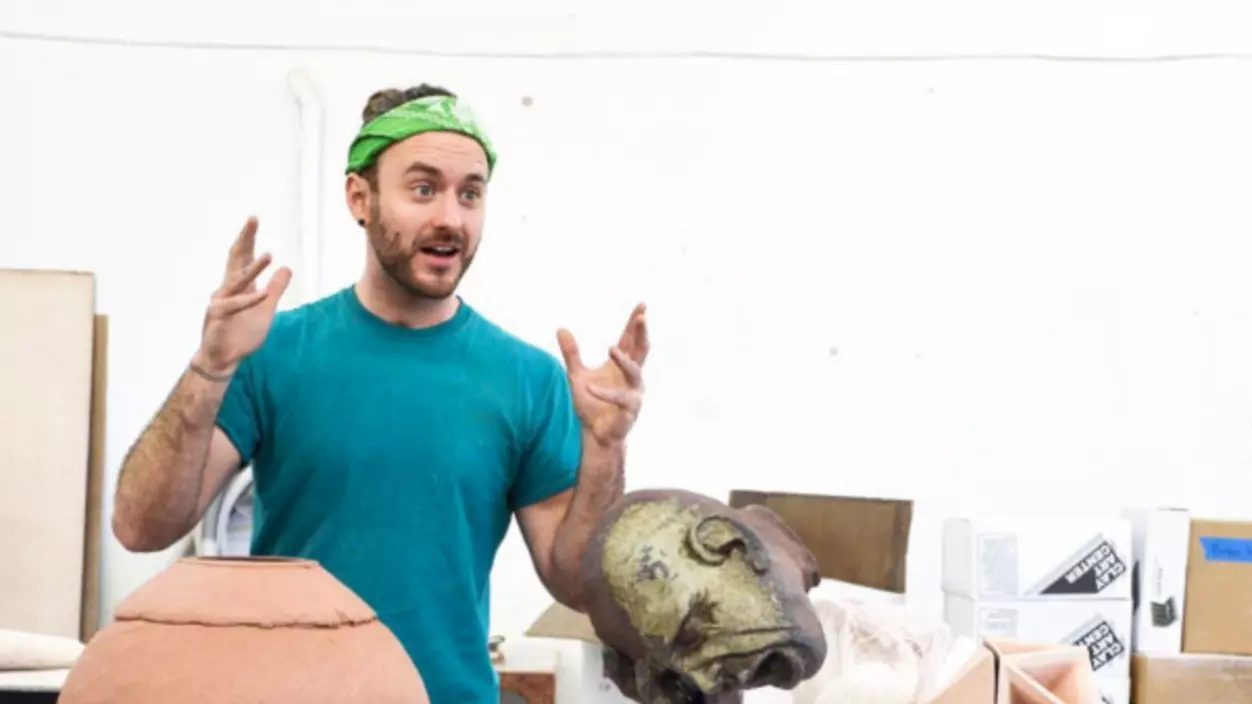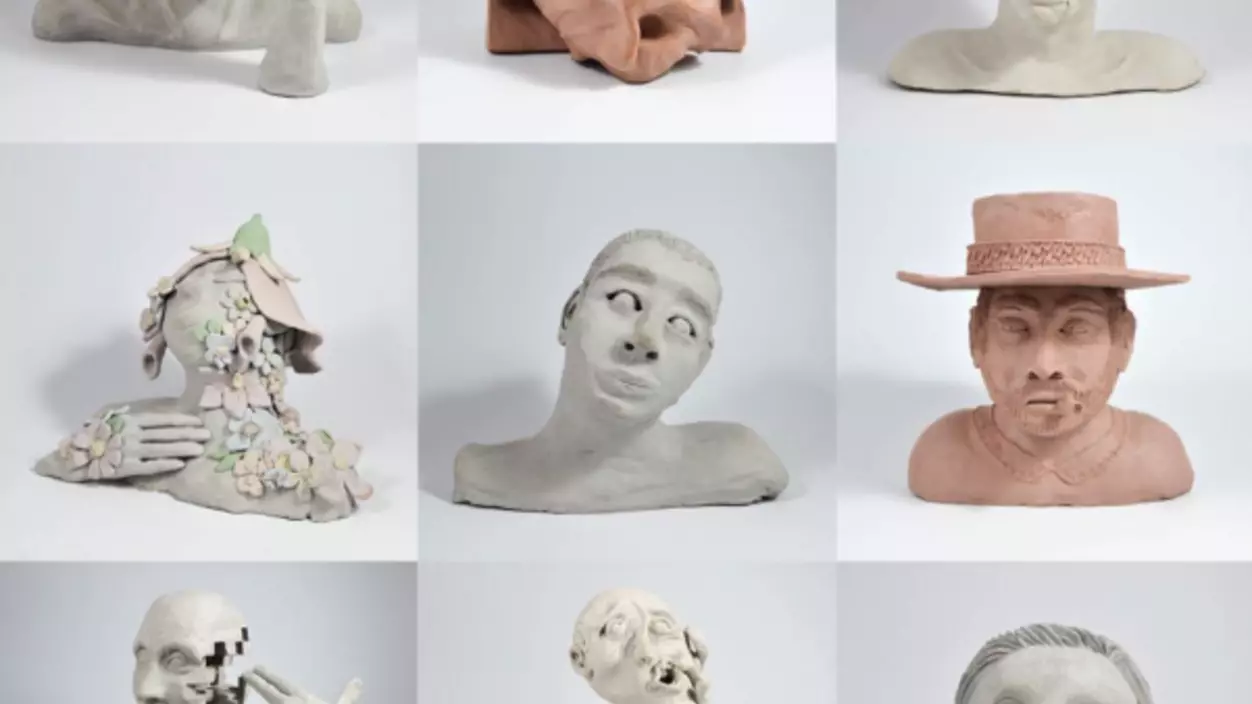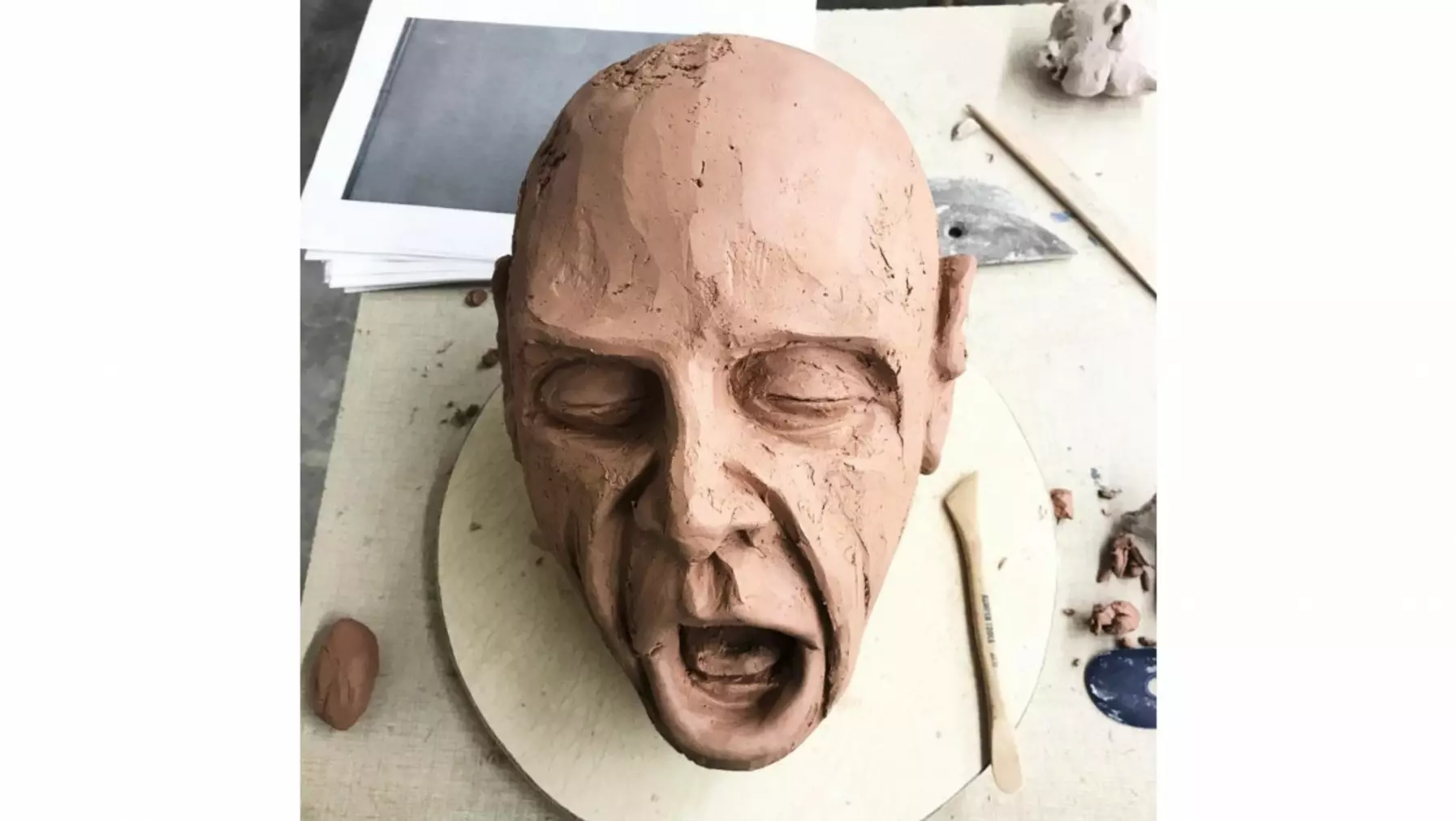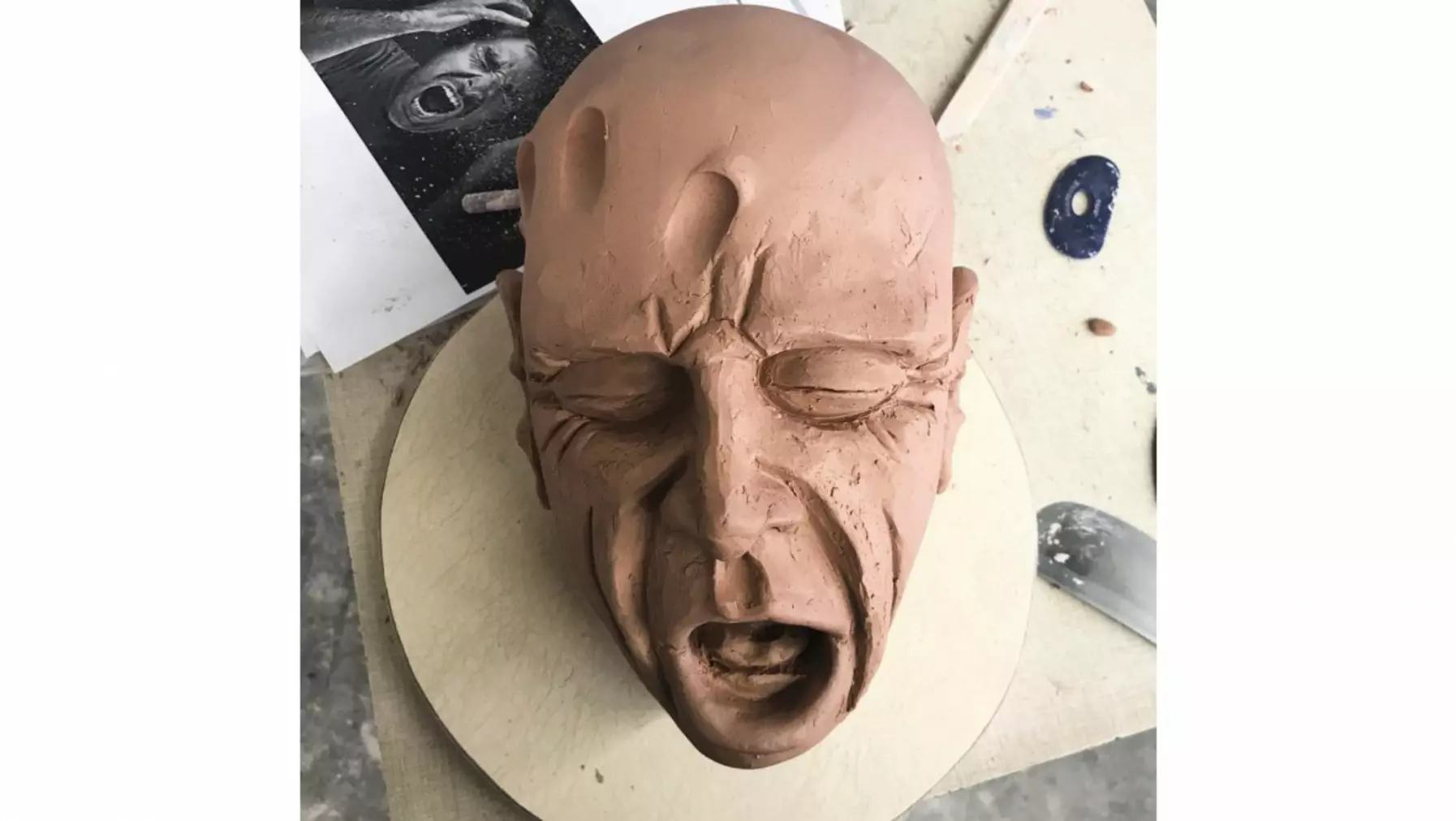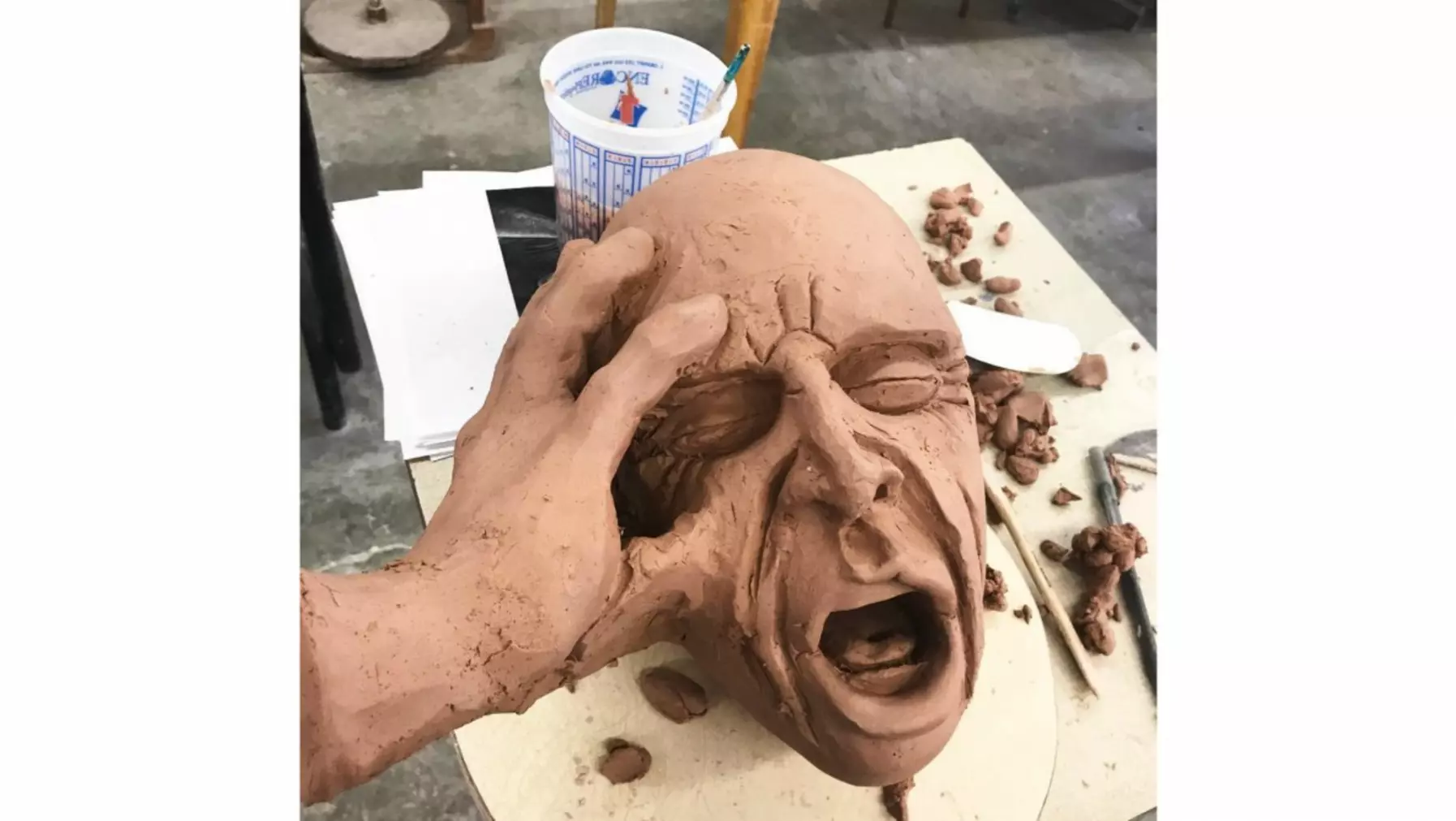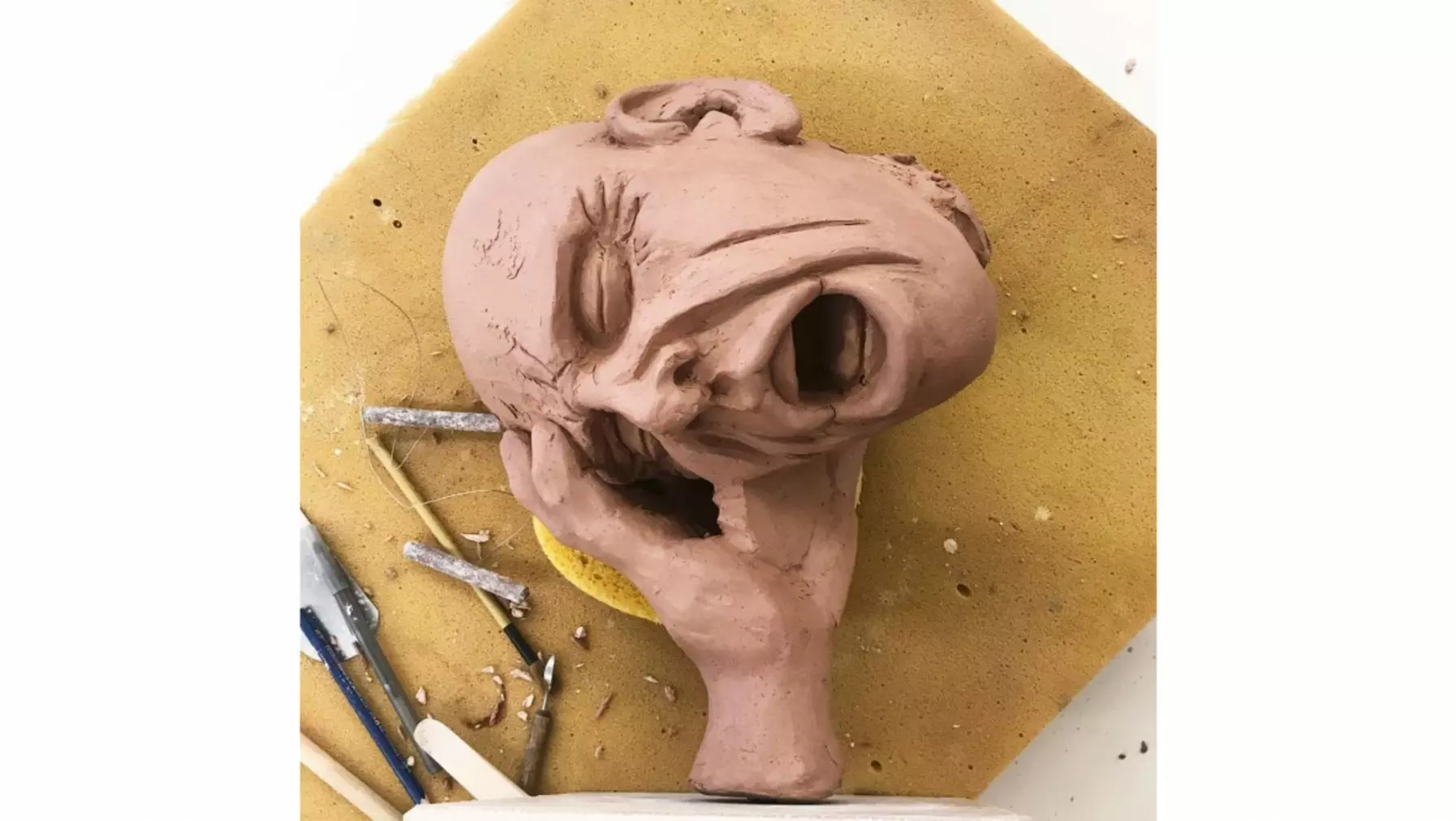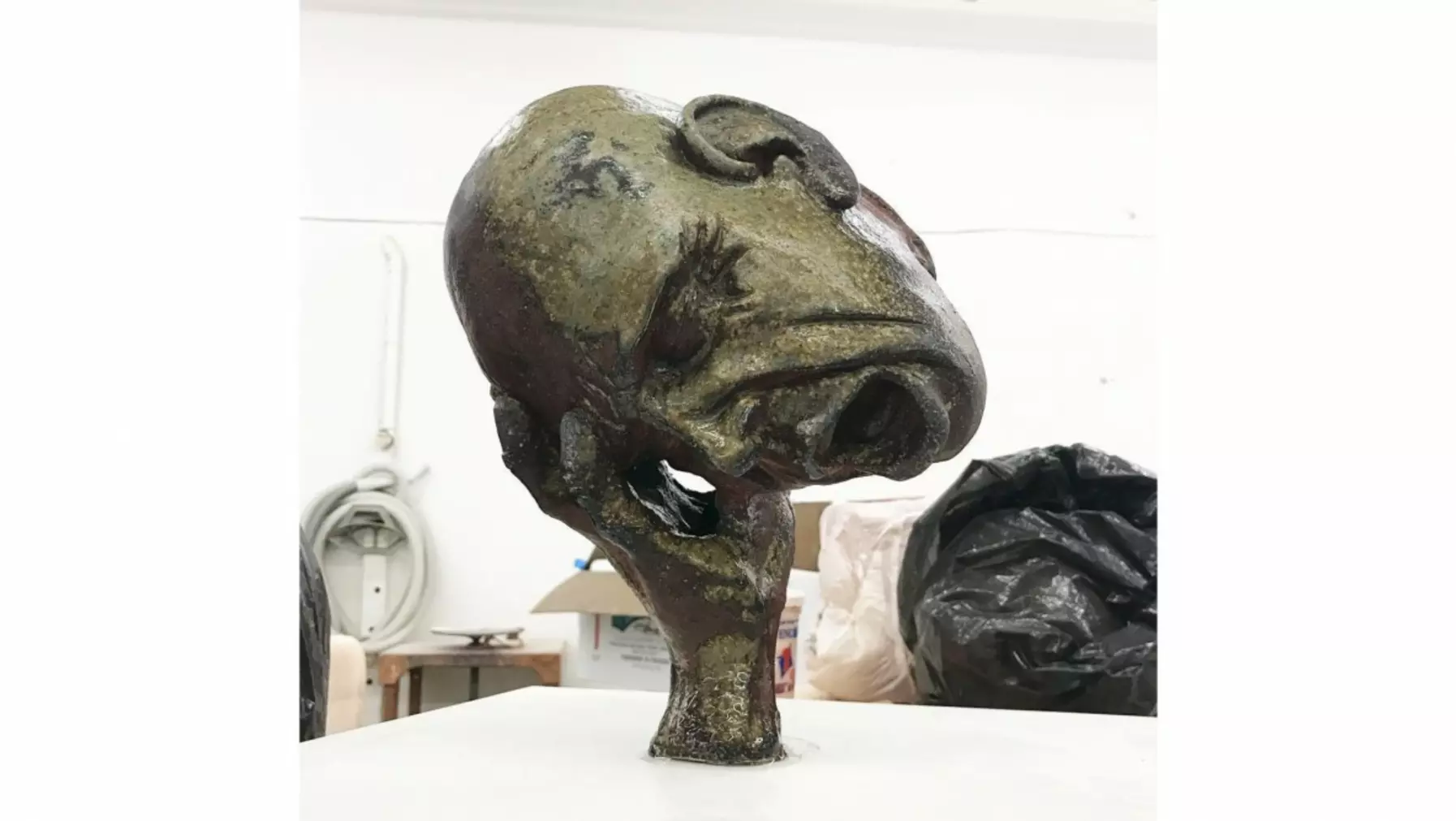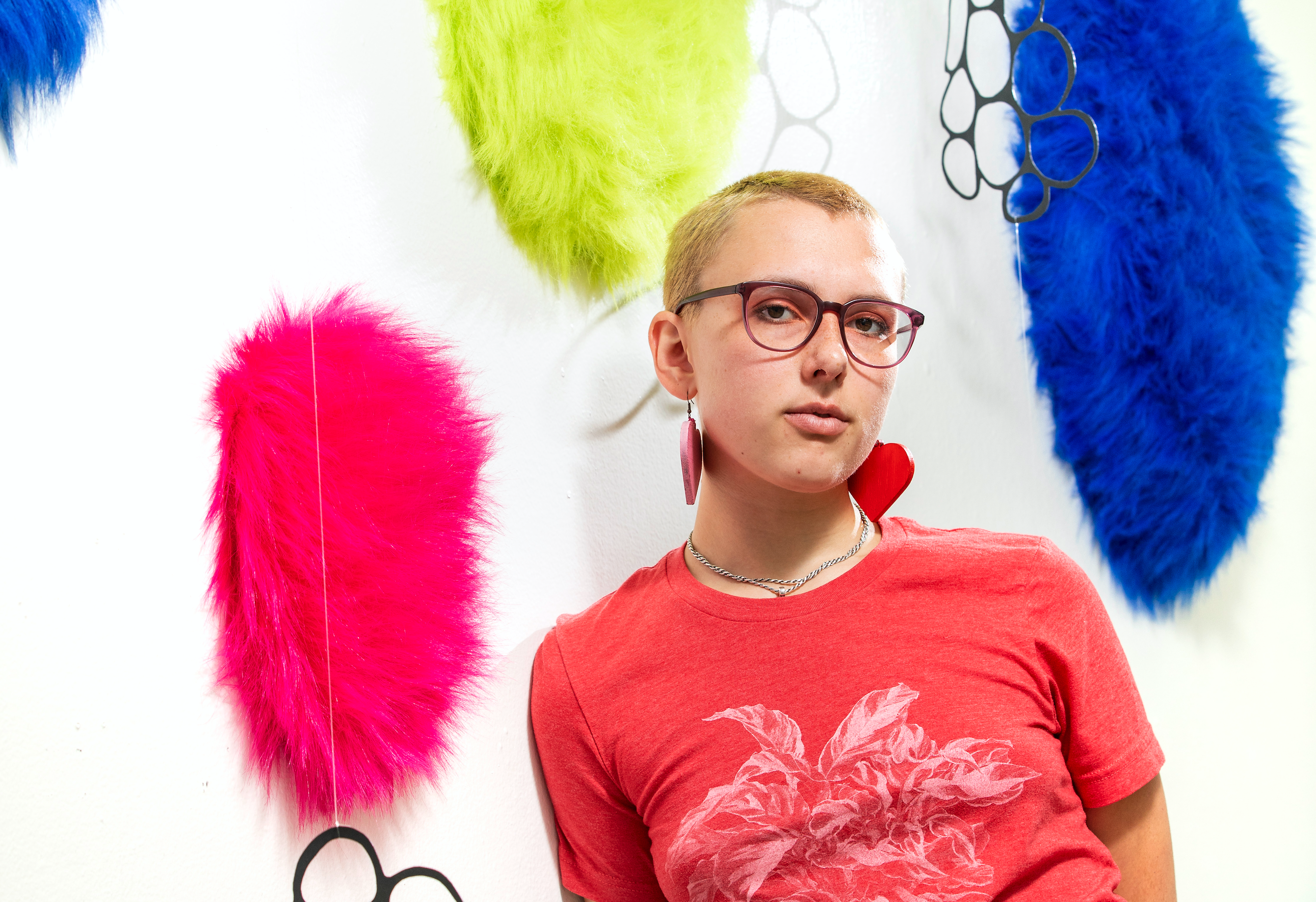Jonathan Steele ’14, adjunct ceramics instructor, hadn’t made a figurative piece since he was a student—then he was asked to teach the class.
ART 248 is a ceramics handbuilding course for art majors thinking about ceramics as a focus, or for painters, drawers, and printmakers who need to fill their 3-D course requirement. It’s one of two classes Jonathan is teaching this semester, while filling in for his former professor, Chad Gunderson.
“You need teaching experience to get teaching experience,” Jonathan says, “and I was feeling uncertain about that and asking [Chad], ‘How do you get your foot in the door of teaching, into academia?’ He said, ‘One great way is a sabbatical replacement position, and just so happens, I’m going on sabbatical next year.’”
That’s how Jonathan found himself preparing to teach portrait figures, the task of transforming hunks of clay into recognizable human figures. But having spent most of his time since grad school making functional pottery like teapots and other vessels to earn an income, he needed a plan.
